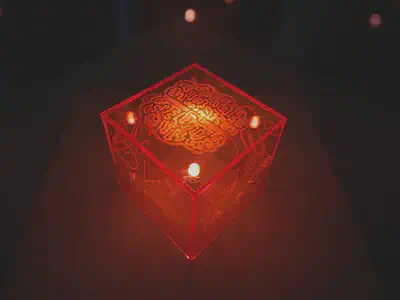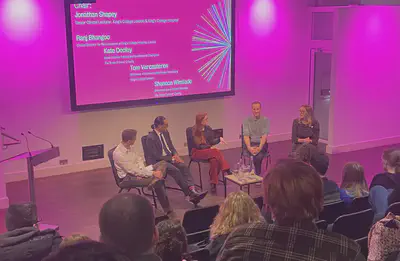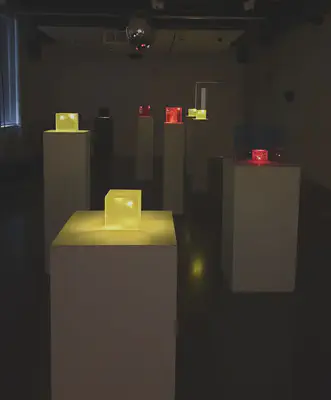Harnessing colour and light to raise awareness of brain tumours
“The opportunity to hear from clinicians, talk to people in my situation and benefit from their feedback was what drew me to this project. I realised the extent of the number of people that are affected by brain tumours," Kate Dooley.
Kate was a participant in “Illuminating the Brain” a collaborative project from artist Kyam, the NeuroHSI and NeuroPPEye researcher group at King’s College London and patients and carers from The Brain Tumour Charity, that exhibited at the Science Gallery London.

There are increasing numbers of new brain tumour diagnoses each year, the current estimate is 13,000. Researchers and clinicians at King’s College London are consistently working on new and better ways to identify and extract these tumours quickly and safely. A large part of supporting diagnoses is awareness and, in this case, awareness comes in the form of art and discussion.
Informed by conversations between researchers, patients and carers, the artwork harnesses colour and light to convey the group’s varied experiences relating to brain tumours. Light and colour were chosen as they reflect the essence of the research project, which is investigating the potential of Hyperspectral Imaging to improve surgery for brain tumour removal.
“Hyperspectral imaging is quite a simple technology. Human vision is based on the detection of red, green and blue centered bands of light that are recombined by the brain to produce colors just like that can be seen in a rainbow. There are actually infinite intermediate colors, and sensing a larger number of them with a bespoke camera that can separate finer bands of light provides much richer information.
Sensing more data alone is not solving the challenge, extraction of relevant information is required and needs to be converted into visual output like images. Hyperspectral imaging has the potential to deliver more information for the surgeon to distinguish between healthy and diseased tissue in each individual patient.” Tom Vercauteren, Professor of interventional image computing at King’s College London.

The Illuminating the Brain project sought to bring researchers, patients and carers together to facilitate sharing across the community and to create an artwork that would raise awareness of brain tumours and the associated research.
“From the workshop, common themes from all groups – patients, clinicians, researchers – were highlighted including trust, the notion of individual but also the different forms of emotional attachment,” Jonathan Shapey, Senior clinical lecturer, King’s College London & King’s College Hospital.
The strength of these discussions and the cultivation of lived experience, enabled artist Kyam to create artwork that really resonated with those who came to experience the showcase.
“The artwork was very thought provoking, especially as someone with lived experience of a brain tumour it’s the first time I’ve seen an artist attempt to capture how it feels,” a patron.

“Collaboration is key in all that has been discussed including sharing practices among clinicians, raising awareness about and ensuring access to participate in research studies. This project demonstrated the positive outcome it has and it is encouraging”. Shannon Winslade, Involvement and Impact Manager at Brain Tumour Charity.
This project was coordinated by the School of Biomedical Engineering & Imaging Sciences Public Engagement team.
If you have been diagnosed with, or treated for a brain tumour and would be interested in helping to guide cutting edge research in neurosurgery and AI please contact the NeuroHSI team or NeuroPPEye team to enquire about space in the Science for Tomorrow’s Neurosurgery PPI group.
To learn more about the project, please visit our neurohsi.uk and neuroppeye.uk pages.